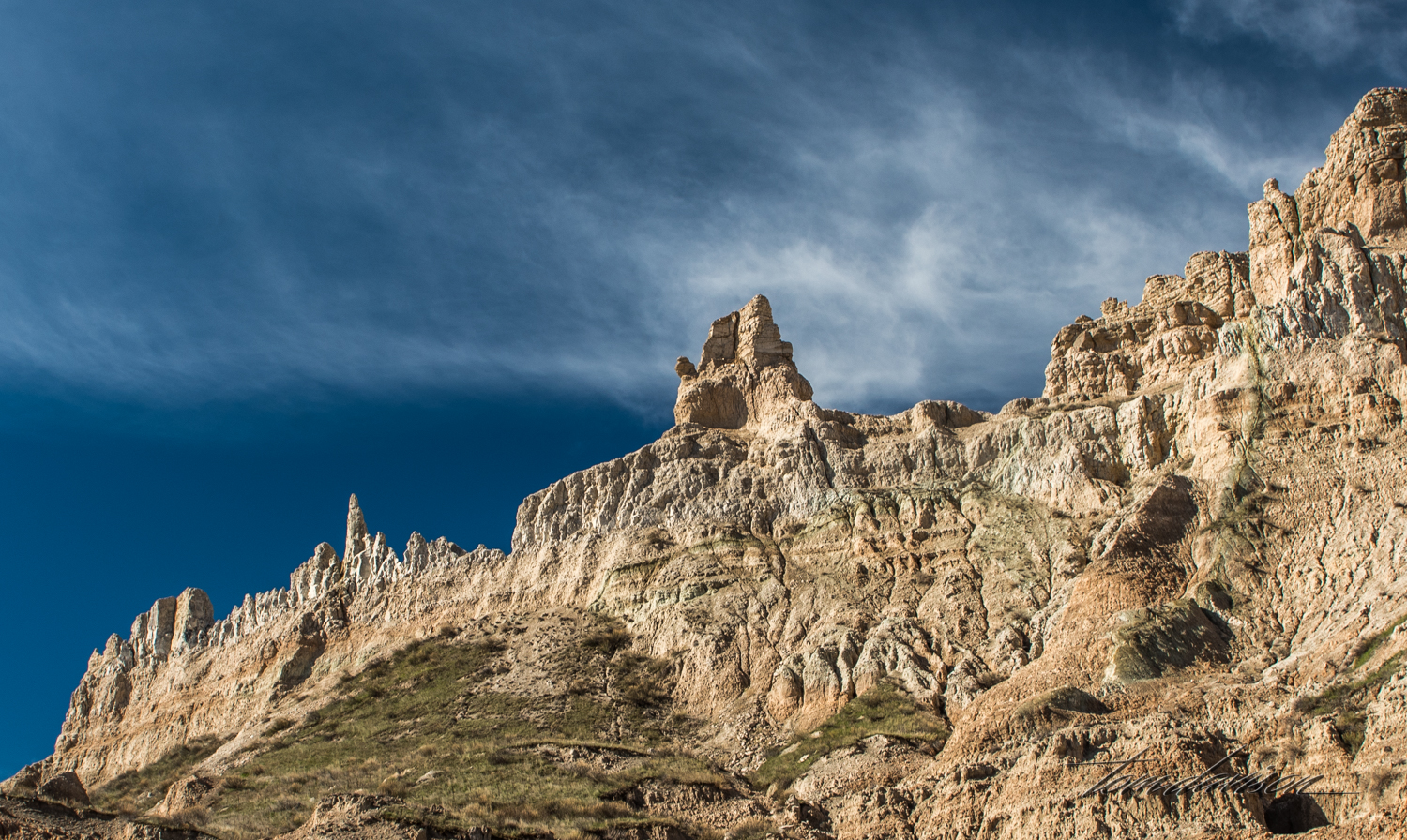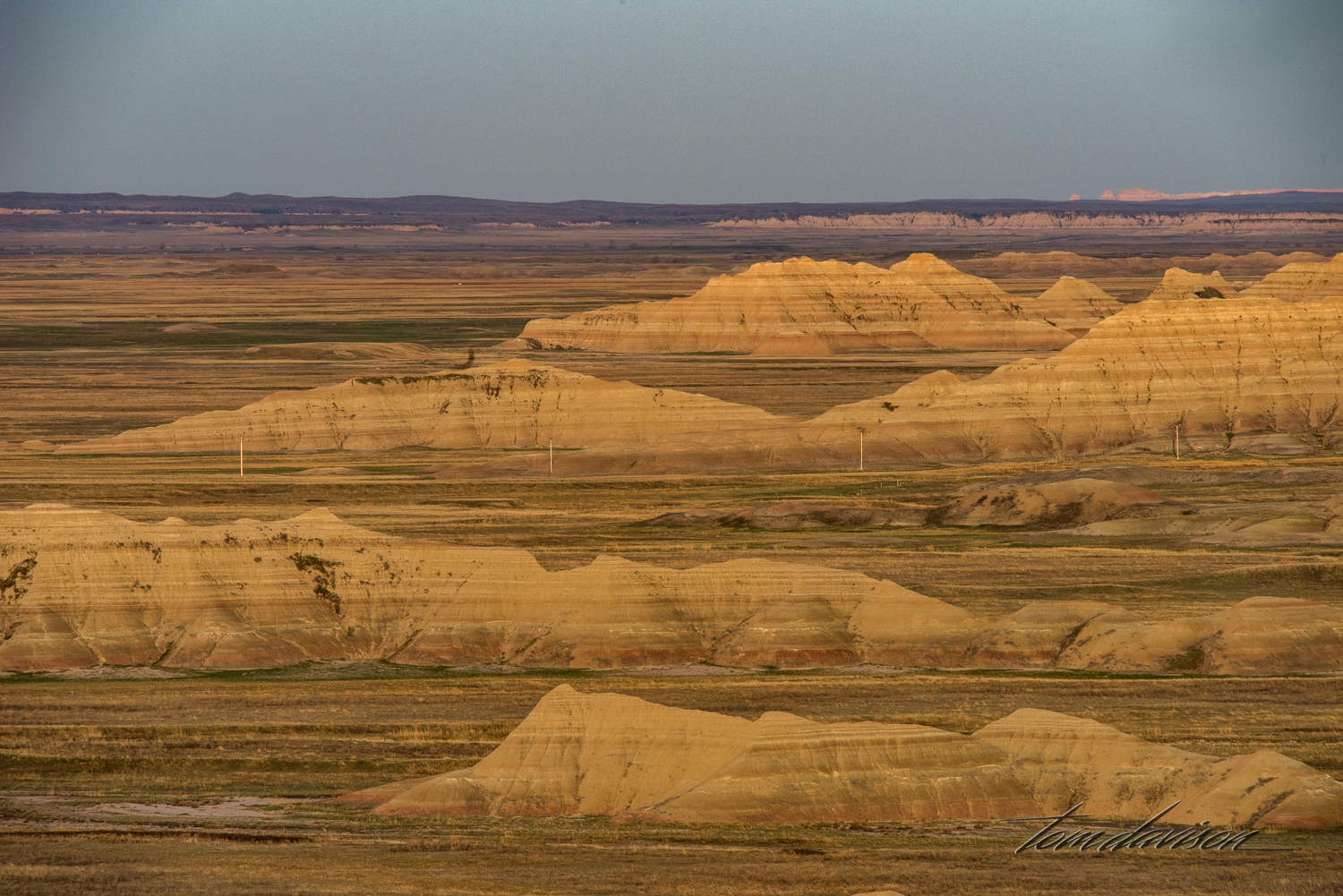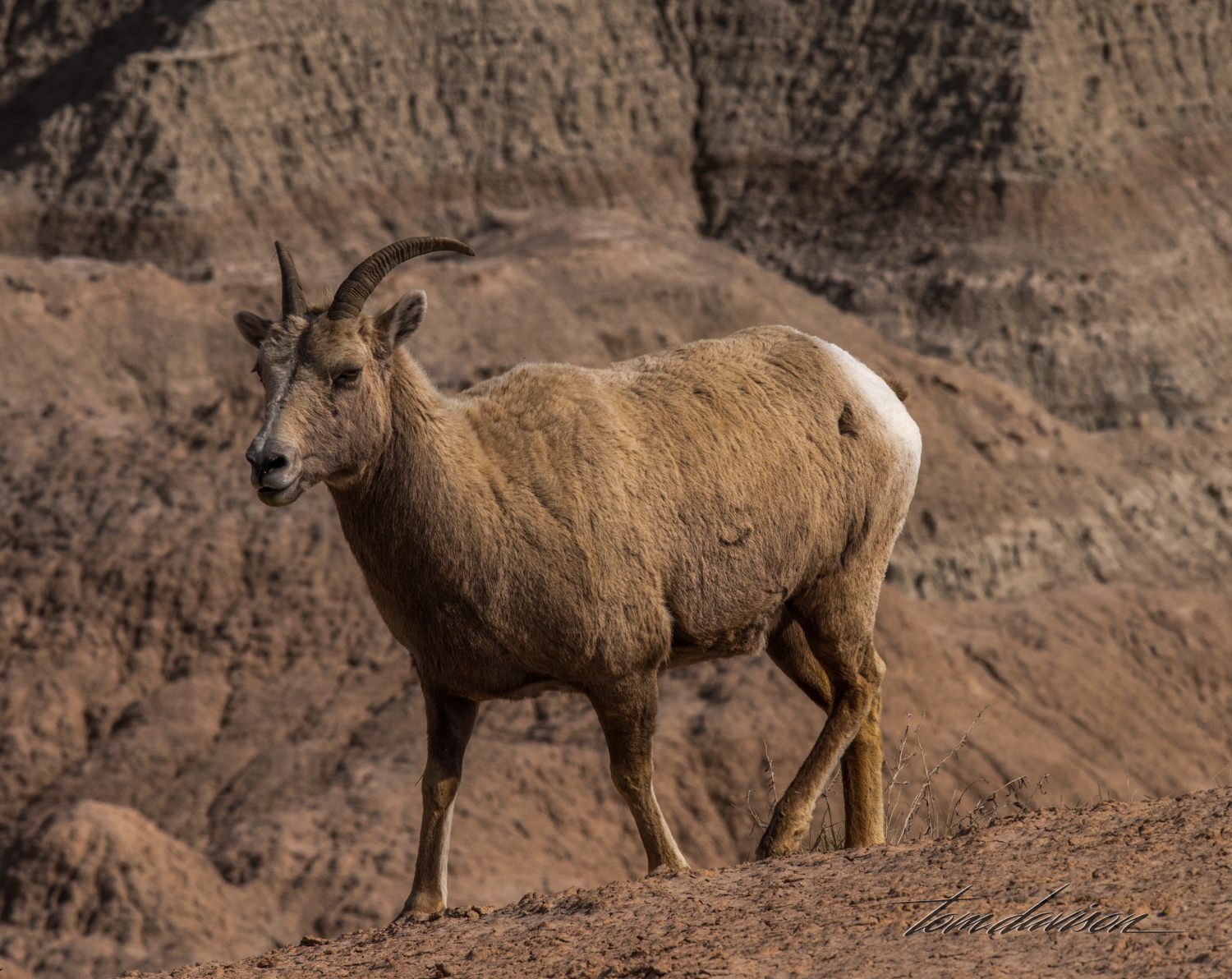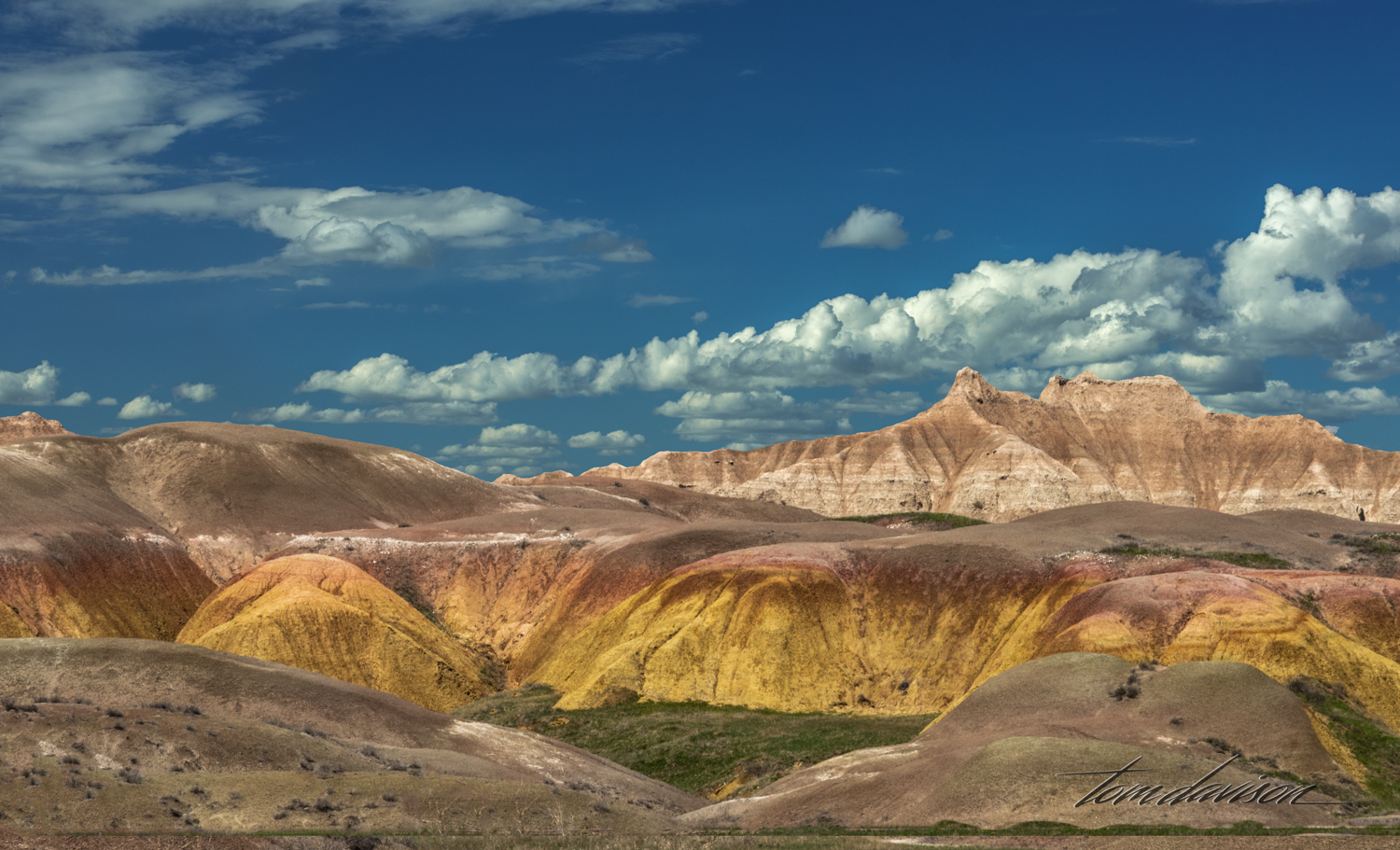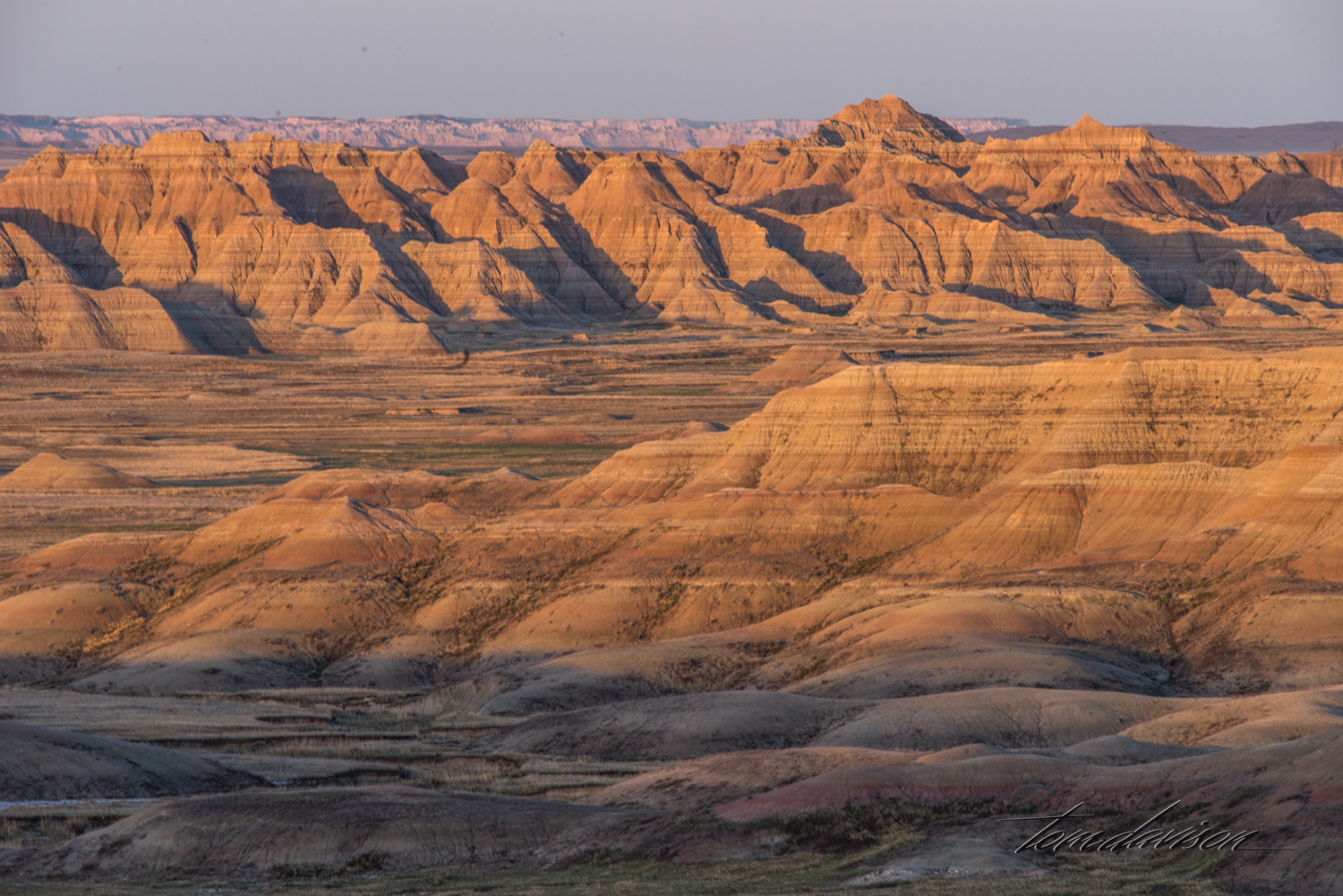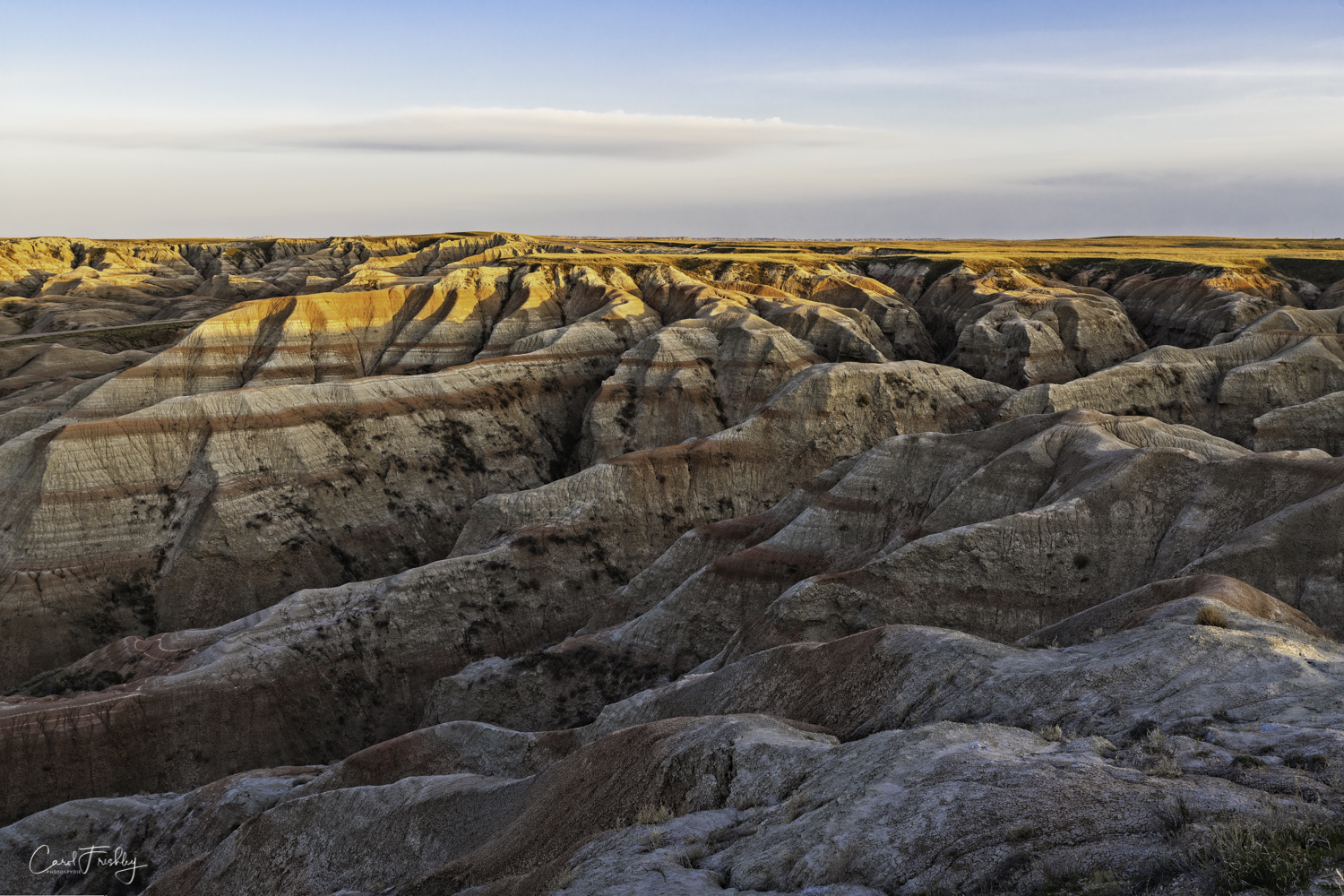The park’s brochure makes a statement about this place that we can appreciate but did not experience. They wrote, “For centuries humans have viewed South Dakota’s celebrated Badlands with a mix of dread and fascination.” For us, the place was simply fascinating! We did not sense the dread, but perhaps it is because we came in spring when the temperatures were mild and the grasses lush and green. In this place one can marvel at the eroded peaks and pinnacles, gullies, buttes and wide prairies. The skies were interesting and the light played with colors that seemed to change by the hour. There is a sense of vastness. Best of all, this is a great place to photograph!
In many places one can see layering in the rock formations; the result of broad cycles of climates and geologic processes that have shaped the region over the past 75 million years.
We saw plenty of Big Horn sheep. They are very used to tourist traffic and will pass within feet of photographers.
Taken during a late afternoon golden hour.
Taken later in the same place with some late light reflecting on just this one hill.
When the black hills were formed in South Dakota the ancient sea drained away. Once exposed to air, the black ocean mud was weathered into a yellow soil and this can be seen in mound-like structures in the park.
This is the only standing water we saw in the park. It is a small pond inhabited by vocal frogs. I suspect that by late spring it will have dried up.
This spot reminded me of Zabriski Point in Death Valley.
Sunrise gold!!
This is a prairie dog. I would have been thrilled to spot a black-footed ferret. The ferrets were once thought to be extinct but were discovered in the wilderness of Wyoming. A program to save them in captivity and then reintroduce them to the prairie in the Badlands National Park seems to have been successful.
This is such a typical photograph representing the richness of the prairie grasses in the park. There are 60 species of prairie grass in the park. I imagine these grasses turn yellow and brown in the extreme summer heat, but for now following significant winter and spring rains, the prairie is flourishing.




